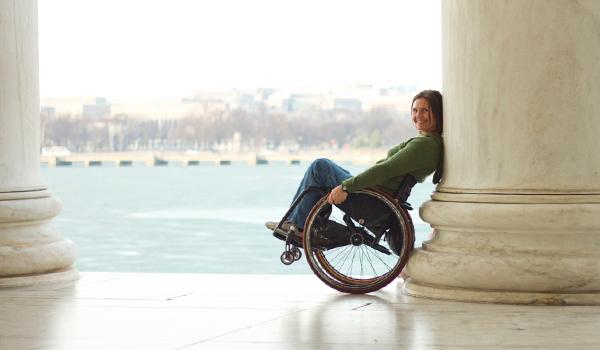An Alabama professor and her assistant researchers are working to re-design wheelchairs for children in need in a study recently approved by the Institutional Review Board.
One of the main goals of the study is to partner with Tuscaloosa city and county schools, helping children in wheelchairs by equipping them with educational tools. The researchers will also adjust the chairs to the children’s needs so they are easier to maneuver.
Margaret Stran, an assistant professor and associate director of the Adaptive Athletics Program, said she knows the importance of a well-fitting chair from personal experience. At 16 years old, Stran received her first wheelchair. She now has a custom-made $8,000 chair.
“The difference between my new chair and old one is truly life changing,” she said. “Suddenly you can get places you couldn’t go before and go faster. My chair probably weighs around 15 pounds as opposed to my first chair that weighed around 25 pounds. The weight of the chair makes such a huge difference.”
Michael Esco, an assistant professor in exercise physiology and co-researcher of the study, said children usually have big, bulky wheelchairs that are not specifically designed for them.
“A lot of times, their only ability to be active is to use their arms, but since it’s so cumbersome, they will just have someone push them,” he said. “In this study, we are going to modify their chair, which will hopefully cause them to be more active.”
One thing they will modify about the chair is the position of the axle. In this study, they are placing scissor brakes under the chair, replacing the high-mounted brakes that are usually on the front of the wheelchair, Stran said.
“We are going to put the axle in a position that is optimal,” she said. “Particularly working on the axle is really going to improve their ability to move, because it improves the maneuverability of the chair.”
Stran said seeing kids in wheelchairs that don’t fit them is one of the reasons for this study.
“You wouldn’t give an 8-year-old a size 13 shoe, but health providers will give an 8-year-old a 16-inch wheelchair,” she said. “It’s something I want to fix and change.”
Wheelchair clinics will be held throughout the study, consisting of educational classes such as wheelchair scales and maintenance. Stran said as a wheelchair user, the individual needs to be able to move around obstacles, such as stairs and curbs, without having someone push or carry the individual. The wheelchair maintenance classes will teach the kids basic skills, such as cleaning the caster and how to change a tire, she said.
“One of the reasons seating specialists put kids in bigger chairs is because their insurance only covers one chair for a certain amount of time before they can get a new one,” she said. “Most kids don’t grow out, they grow up. So we don’t need to put them in giant chairs.”
Stran said most parents don’t know what a good chair is, besides what the seating specialists tell them. The study will be educational for the parents too. It will teach them how the right chair for their child can make a huge difference.
“We are hoping this study and the adjustments made will positively impact the rest of their lives,” Stran said.









